The 48 Best Grand Prix Drivers in Formula One History
This website since its inception has covered The history of Grand Prix Motor Racing through the lives of its greatest drivers, people and events with a special focus on the history of Formula 1. At its core is the Grand Prix History Hall of Fame. Below we have taken you through our list of the top people in F1.
 Fernando Alonso
Fernando Alonso
There is no more relentless and forbidding competitor in Formula 1. His greatest qualities – among many – are the ability to pound out lap after lap in every grand prix at the absolute limit and always to get the best out of his machinery, however flawed.
 Mario Andretti
Mario Andretti
The mere mention of his name conjures up an image of speed just as the proverbial sarcasm “Who do you think you are Mario Andretti ?” has been heard from police officers to back seat drivers. Even people with only a hazy awareness of the sport of motor racing recognize Andretti as the very essence of the professional race car driver. A driver who has won on everything with four wheels.
 Antonio Ascari
Antonio Ascari
Ascari was a very unlucky driver and it seemed he would always break in sight of the checkered flag but he had speed in spades. In 1925 he was at the peak of his career and at Alfa Romeo Antonio Ascari and Campari were fierce rivals. It was not enough to beat Campari, he had to destroy him and this would prove his undoing at 1925 French Grand Prix.
 Alberto Ascari
Alberto Ascari
Alberto Ascari enjoyed racing at the front especially while crossing the finish line. In 1952 he won every Grand Prix race that he entered and claimed his first World Championship. In 1953 he had a second title, during his career he was only driver who could compete with Fangio on the same level until Stirling Moss. Ascari was loved by the Italian fans and by many of his rivals, including his dear friend and mentor “Gigi” Villoresi.
 Luigi Bazzi
Luigi Bazzi
Luigi Bazzi was called the soul of Ferrari. He had been there from the beginning and Enzo Ferrari recalled his trusted friend as “the founding member of the old guard of collaborators. Due to his quiet and unassuming nature to those on the outside he had the appearance of a mechanic or test driver but those with a better understanding knew that no engine ever left the racing factory without having come under his watchful eye.
 Georges Boillot
Georges Boillot
Georges Boillot was a mechanic by training who began automobile racing in 1908. He helped create a novel range of racing cars as part of the Peugeot team and through his exploits he won the heart of France. At Dieppe, France, in June 1912, Georges Boillot won the French Grand Prix in his Peugeot L76.
 Pietro Bordino
Pietro Bordino
In the early twenties, Fiat driver Pietro Bordino, was the fastest of them all. Always on the absolute limit, no one could handle a car at high speed on tricky corners as he could. He was in a class of his own but was let down time and again by mechanical breakdowns while dominating races but the public forgave his lack of wins and idolized him for the style he displayed.
 Jack Brabham
Jack Brabham
Black Jack he was called for his often dour expressions. Jack Brabham won three World Championships, two for Cooper where he led the push to rear-engined cars, and the last driving a car of his own manufacture. In has last season he lost a spectacular Monaco Grand Prix to Jochen Rindt but the fact that he was competitive even at the age of 43 in a young man’s sport only adds to his legacy.
 David Bruce-Brown
David Bruce-Brown
In 1909 he beat Ralph DePalma’s Fiat in the Dewar Trophy and DePalma would later remark that David Bruce-Brown was “one of the greatest drivers who ever-gripped a steering wheel”. By 1910 this 20-year old won international fame through his victory in the American Grand Prize at Savannah over Victor Hemery. Hemery was one of the best drivers in the world but even he was taken in by the charms of the young lad.
 Ettore Bugatti
Ettore Bugatti
Although his co-workers often had to scrutinize his designs for their technical feasibility, the final result was always a perfectly proportioned automobile, which, from an aesthetic standpoint, was impossible to resist. As a passionate horse lover, Ettore Bugatti liked to call his aesthetically meticulous creations “Pur Sang”, or thoroughbreds.
 Rudolf Caracciola
Rudolf Caracciola
Rudolf Caracciola, known as “Ringmeister”, for his mastery of Nurburgring. He was also especially adept when the conditions turned to rain. His career spanned four decades and many of his old racing trophies are on display at the Indianapolis Speedway.
 Colin Chapman
Colin Chapman
Colin Chapman was the acknowledged master among F1 constructors at getting the most number victories out of the least amount of aluminum, steel, plastic and carbon-fibre. If his cars did not always inspire his drivers with confidence, they did know that when he got it right they could be unbeatable. As a result he ranks second only to Ferrari in the pantheon of great race car builders.
 Jimmy Clark
Jimmy Clark
Jimmy Clark and the Lotus of Colin Chapman were an unbeatable pair. In fact if he didn’t breakdown you would most likely find him in the winners circle. He took Indianapolis by storm and won on his third attempt. Considered the most naturally talented driver of all time his career was cut short when he was killed in a Formula 2 race at Hockenheim.
 Cooper Cars
Cooper Cars
After the war thousands of returning soldiers had gained experience maintaining and driving all manner of military vehicles. Building cars and racing them seemed the logical next step. Into this environment came Cooper and their 500cc race cars. Sold in kit form and costing £575, Cooper Cars Ltd were the perfect example of being in the right place at the right time and automobile racing for the common man had arrived. Soon Britain would become the modern home of motor racing.
 Juan-Manuel Fangio
Juan-Manuel Fangio
Juan-Manuel Fangio “The Master” won more World Championships than any man. He was as close to perfection as any mortal could be. Once passing rivals Collins and Hawthorne by “straightening out” a series of curves at full speed.
 Giuseppe “Nino” Farina
Giuseppe “Nino” Farina
During the late 1930s with the Germans Mercedes and Auto Union dominating the Grand Prix scene Nino Farina found some success in minor races which race to the Voiturette class rules securing himself the Italian Drivers’ Champion three years in a row.
 Enzo Ferrari
Enzo Ferrari
Enzo Ferrari the founder of the company that bears his name died in 1988 at the age of 90 but his legend lives on. Other marquees have their fans yet only one team has what could be called disciples. A team that has not won a World Championship for eighteen years yet exerts a mystical hold on the hearts of a nation. This is a nation without boundaries, their citizens are known as the Tifosi, their flag the Prancing Horse.
 Emerson Fittipaldi
Emerson Fittipaldi
The first of the famous trio of great Brazilian drivers Emerson Fittipaldi became the youngest World Champion at the age of 25 driving for Lotus. Later winning another title for McLaren before moving to his own team, Copersucar. This under funded team led to personal bankruptcy and eventual retirement from Formula One. His second career as an Indianapolis winner returned the luster to his reputation.
 Lewis Hamilton
Lewis Hamilton
Hamilton showed unusual ability at an early age, but his father, Anthony on his salary at British Rail could barely afford his son’s secondhand karts or the racing expenses. in 1998 McLaren signed Hamilton to the team’s young driver programme with an option on the 13 year-old should he ever make it into Formula One.
 Graham Hill
Graham Hill
Graham Hill the father of World Champion Damon was my boyhood hero. He epitomized how a race driver should act and look. The only man to win Indianapolis, Le Mans and the F1 World Championship. The 5-Time winner of Monte Carlo drove during what many consider the golden years of F1 against such legends as Clark, Brabham, Surtees, and Gurney.
 Vittorio Jarno
Vittorio Jarno
Vittorio Jano’s P3 dominated the Belgian Grand Prix at Spa in 1925. With the race now an Alfa-Romeo parade the fans began to make their displeasure known and Jano in response ordered his cars to pit. While they were being refueled the cars were cleaned and buffed. During this pit stop he had a table placed in full view, whereupon he imperiously ate lunch, deaf to the howls of the spectators.
 Camille Jenatzy
Camille Jenatzy
Using a pair of 25-kilowatt electric motors fed by batteries delivering 200 volts and 124 amps, La Jamais Contente produced approximately 68 horsepower. That proved enough to propel Jenatzy to a top speed of 65.8 miles per hour, or 105.9 kilometers per hour, and on April 29, 1899, Camille Jenatzy achieved immortality as the first to break the 100 KPH barrier in an motor car.
 Niki Lauda
Niki Lauda
Out of all of the billions of words written and spoken about Grand Prix, probably no one has ever heard or read: “You know so-and-so? He reminds me of Niki Lauda.” Unimpressive in appearance even before his Nurburgring accident, Lauda nevertheless has a force of personality and Teutonic strength of will that in the ’70s and ’80s carried him to three Formula 1 championships spread over two careers, and success in the airline business.
 Nigel Mansell
Nigel Mansell
To the British fans he was “Our Nige”, to the Italians, “il leone”. Supremely confident in a racecar Nigel Mansell was a bag of insecurities out of one. It was said that he drove with a Union Jack on his helmet and a chip on his shoulder but if his mind was in the race you knew that you were in a knife fight if you wanted to win.
 Guy Moll
Guy Moll
An international racing driver for only two years, and works driver for less than one season. Yet in that short time he made such an impact that his name is forever written into the annals of Grand Prix racing. Enzo Ferrari remembered the Algerian, “…a debutante. His name was Guy Moll and he was showing that he belonged to the small group of top drivers. It is true that Moll was not the first foreigner that drove for me, but I acknowledge that he was the most sensational one.
 Stirling Moss
Stirling Moss
Stirling Moss will always be known as the greatest driver never to have won the World Championship. But if the measure of a man is more than just honors but the respect in which he was held by his peers then he was a champion many times over. I will never forget my introduction to this man through his exploits during the 1955 Mille Miglia with Denis Jenkinson.
 Jimmy Murphy
Jimmy Murphy
It’s said of some drivers that they were born to race. But for Jimmy Murphy it was death that led him to racing. The San Francisco Earthquake of 1906 left the 11-year old an orphan to be raised by his parent’s relatives, first in what remained of San Francisco but later to Southern California which would become a hot bed of racing in the U.S. As a mechanic Murphy rode with some of America’s greatest drivers; eventually he would surpass them all.
 Felice Nazzaro
Felice Nazzaro
Only a year after Fiat was founded in 1899, two young Fiat shop workers, Vincenzo Lancia and Felice Nazzaro, brought the Turin firm a one-two finish at Padua. By 1907, at the age of 26, Felice Nazzaro was the greatest driver in the world and he would remain a threat to win any race he entered until 1924 after more than two decades at the wheel.
 Alfred Neubauer
Alfred Neubauer
Alfred Neubauer the former race car driver for Austro-Daimler had his wife once tell him that he drove like “a night watchman..” Whether this caused him, when he became a team manager for Mercedes, to exact any revenge on his drivers is unknown! What is known is that this legendary figure was responsible for more innovations, along with some “crack-pot” ideas than any team manager in the history of the sport.
 Adrian Newey
Adrian Newey
They say in F1 that Newey can see the air move across a surface. “If you have Adrian Newey on your team,” says Indianapolis 500 winner Bobby Rahal, with whom in 1986 Newey won the first of 25 international titles, “then your team is going to be World Champion.”
 Tazio Nuvolari
Tazio Nuvolari
Tazio Nuvolari’s legend is full of exploits of daring and almost unbelievable personal courage and will to win. He would continuously beat better equipped rivals and come back from numerous injuries only to compete in bandages. In his entire career Tazio Nuvolari won almost two hundred major races and only came in second 17 times.
 Ronnie Peterson
Ronnie Peterson
Ronnie Peterson or SuperSwede as he was called was a hopeless development driver. That being said his unworldly car control was a sight to behold. The image of Peterson coming through Woodcote absolutely on the limit with tires squealing and using just enough opposite lock and throttle to control his car has been described countless times. The people who paid witness knew that they were seeing something magical.
 Nelson Piquet
Nelson Piquet
The middle driver in the trio of great Brazilian Champions Nelson Piquet built a reputation on guile and cunning often beating seemingly more spectacular drivers. One of four championship winning drivers including Senna, Prost and Mansell who dominated Formula 1 in the 80’s and early 90’s. The results amounted to three World Championships and 23 wins and a place in the Grand Prix Hall of Fame.
 Ferdinand Porsche
Ferdinand Porsche
Declared the Car Engineer of the Century Ferdinand Porsche perfected many important automotive design features. He has received credit as the inspiration behind the legendary Auto Union race cars, as well as the Volkswagen “peoples” car. Air-cooled engines and torsion bar suspension have become synonymous with Porsche but there is a darker side to Porsche’s legacy, his involvement with the Nazi regime.
 Alain Prost
Alain Prost
Alain Prost “The Professor” won 4 World Championships but because he could be so calculating people tended to overlook his outright speed. When partnered with Niki Lauda his lap times left the Austrian in his exhaust. Prost won more races than any other driver yet he was criticized for quitting a race because he thought the conditions were too dangerous.
 Guilo Ramponi
Guilo Ramponi
In 1928 Campari/Guilio Ramponi entry won the Mille Miglia beating a strong OM and Lancia opposition, leading the first OM home by around fourteen minutes. The following year the duo drove an upgraded Alfa Romeo 6C 1750 home in first place ahead of an OM by a mere 8 minutes — after a race that lasted 18 hours!
 Jochen Rindt
Jochen Rindt
Jochen Rindt dominated Formula 2 but the top rung of motor sport was another story. Determined to win the World Championship he joined Lotus with some misgivings, feeling that the cars were too fragile. In 1970 driving an old Lotus 49 he drove in one of the most stirring finishes in modern Grand Prix history when he caught and passed 3-time World Champion Jack Brabham at the Monaco Grand Prix on the last corner of the race.
 Bernd Rosemeyer
Bernd Rosemeyer
Bernd Rosemeyer’s infectious personality made him a hero to the German people. His victory in the mist-shrouded Eifelrennen made him a legend. The young man from Lower Saxony in the words of Cyril Posthumas “… shot meteor-like across the motor racing firmament, driving three short but shattering seasons before his light went out …”
 Michael Schumacher
Michael Schumacher
Michael Schumacher “The German” in his short time in Formula One already has made a legend for himself. His 2 World Championships, wins with inferior equipment and his ability to destroy teammates with his raw speed force his inclusion onto this list with the majority of his career still in front of him.
 Ayrton Senna
Ayrton Senna
Ayrton Senna the greatest driver I ever saw was according to Stirling Moss “…the only driver who could be spoken of in the same breath as Fangio and Clark. The mere sight of his yellow helmet in a drivers mirror would raise any drivers pulse. His battles against Prost reminded one of the famous epic battles between Frazier and Ali with neither side giving quarter.
 Jackie Stewart
Jackie Stewart
Jackie Stewart was the first modern driver who spoke of the need for greater safety. Until he arrived on the scene race car drivers were not well paid. Beyond this he was fast, especially at the start of the race where he would roar off into the distance and demoralize all of his opposition.
 John Surtees
John Surtees
John Surtees is the only man to have won World Championships on two and four wheels. An out-and-out professional, with a strong independent streak, he took on all-comers to win seven World Championships on motorcycles, one Formula One world drivers’ title and the North American Can-Am Championship for sports cars.
 Leon Thery
Leon Thery
Leon Théry became renowned for his methodical documentation in a ‘race log’ of circuit details, road conditions, tyres, engine reliability, and car performance. He would estimate what it speed would be necessary to win the race and then drove to the speed he had calculated in the race log. This would help him to earn the sobriquet of Le Chronometer. Interviewed at an Automobile Club of America dinner he stated that: “To be a successful racing man one must drive as if he were the only man in the race.”
 Achille Varzi
Achille Varzi
Achille Varzi was as elegant in the way that he dressed as he was in the way that he drove. His name will forever be entwined with that of his great rival Tazio Nuvolari. Fierce competitors on the track they were friends off of it, yet except for a brief period early in their careers no team was large enough to hold these two great champions.
 Sebastian Vettel
Sebastian Vettel
Sebastian Vettel was born on 3 July 1987 in Heppenheim, Germany. He began karting in 1991, aged three and in 1995 he started racing. Vettel won a series of karting titles and in 2003, he graduated to single-seaters. In 2007 he graduated to a spot in the Toro Rosso team. Scoring his first win, at the Italian Grand Prix the following year..
 Gilles Villeneuve
Gilles Villeneuve
Gilles Villeneuve spent the majority of his stint in Formula 1 with Ferrari. He was without question one of the two or three most popular drivers ever to work for Il Commendatore. His trademark was speed. He was absolutely uncompromising when it came to driving fast. Wet or dry, good car or bad, tough track or easy, for Villeneuve there was no excuse for not going as fast as (and sometimes faster than) possible.
 Jean-Pierre Wimille
Jean-Pierre Wimille
Jean-Pierre Wimille’s rise to greatness was interrupted by the start of World War II but at its conclusion it was he who was considered above all. Austere, rather aloof, and often withdrawn, his peak years before his untimely death, occurred while the attention of the world was on other matters. He had many admirers including a driver from Argentina by the name of Juan-Manuel Fangio.
 Rob Walker
Rob Walker
On his passport, under occupation, it read simply Gentleman, a description, a description to his many friends, one never more fitting. Someone once described him as “self-unemployed.” but never idle. By the age of 21 he had owned his 21st car. To say that racing was in his blood would prove an understatement.


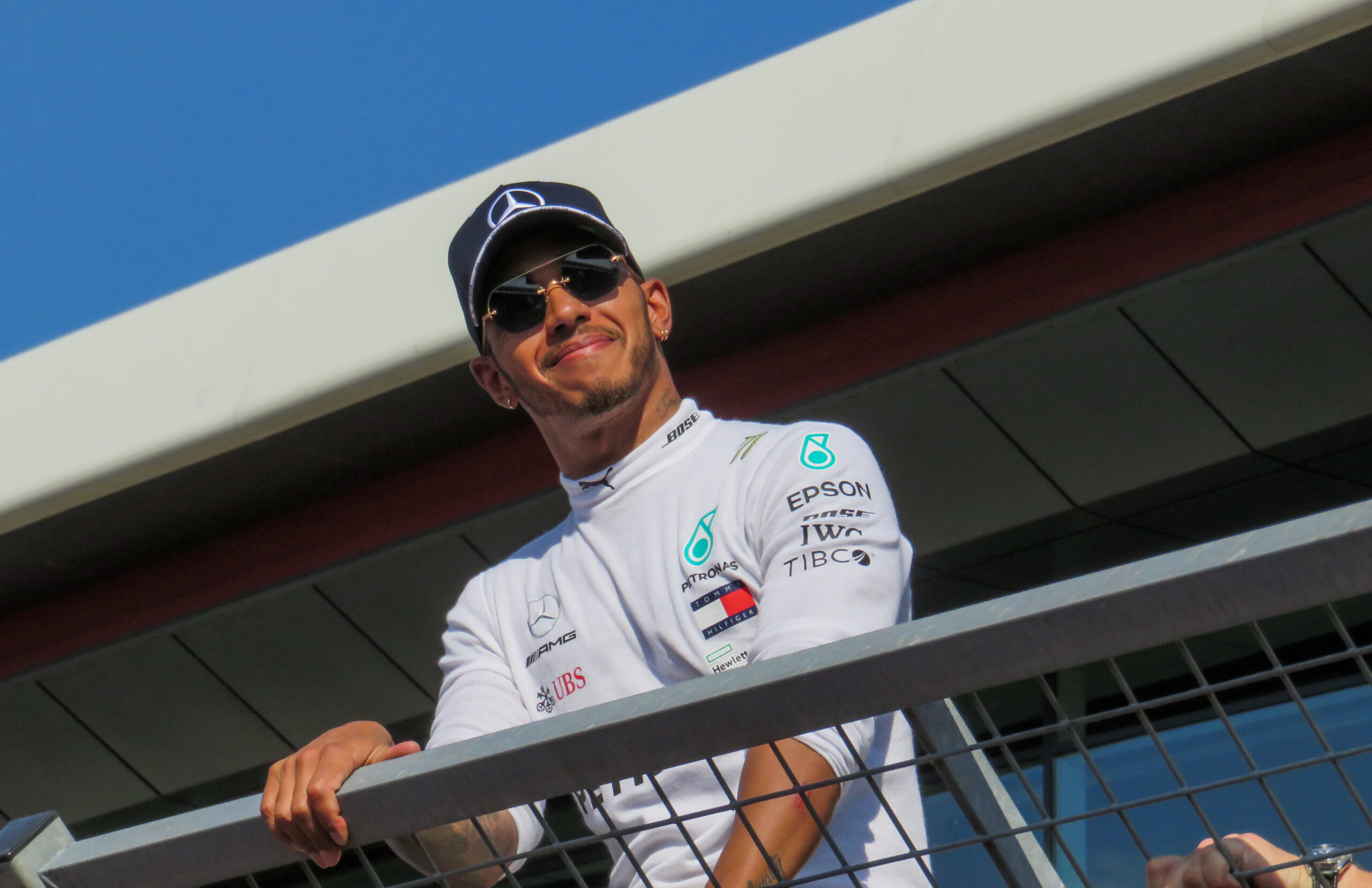

 Fernando Alonso
Fernando Alonso Mario Andretti
Mario Andretti Antonio Ascari
Antonio Ascari Alberto Ascari
Alberto Ascari Luigi Bazzi
Luigi Bazzi Georges Boillot
Georges Boillot Pietro Bordino
Pietro Bordino Jack Brabham
Jack Brabham David Bruce-Brown
David Bruce-Brown Ettore Bugatti
Ettore Bugatti Rudolf Caracciola
Rudolf Caracciola Colin Chapman
Colin Chapman Jimmy Clark
Jimmy Clark Cooper Cars
Cooper Cars Juan-Manuel Fangio
Juan-Manuel Fangio Giuseppe “Nino” Farina
Giuseppe “Nino” Farina Enzo Ferrari
Enzo Ferrari Emerson Fittipaldi
Emerson Fittipaldi Lewis Hamilton
Lewis Hamilton Graham Hill
Graham Hill Vittorio Jarno
Vittorio Jarno Camille Jenatzy
Camille Jenatzy Niki Lauda
Niki Lauda Nigel Mansell
Nigel Mansell Guy Moll
Guy Moll Stirling Moss
Stirling Moss Jimmy Murphy
Jimmy Murphy Felice Nazzaro
Felice Nazzaro Alfred Neubauer
Alfred Neubauer Adrian Newey
Adrian Newey Tazio Nuvolari
Tazio Nuvolari Ronnie Peterson
Ronnie Peterson Nelson Piquet
Nelson Piquet Ferdinand Porsche
Ferdinand Porsche Alain Prost
Alain Prost Guilo Ramponi
Guilo Ramponi Jochen Rindt
Jochen Rindt Bernd Rosemeyer
Bernd Rosemeyer Michael Schumacher
Michael Schumacher Ayrton Senna
Ayrton Senna Jackie Stewart
Jackie Stewart John Surtees
John Surtees Leon Thery
Leon Thery Achille Varzi
Achille Varzi Sebastian Vettel
Sebastian Vettel Gilles Villeneuve
Gilles Villeneuve Jean-Pierre Wimille
Jean-Pierre Wimille Rob Walker
Rob Walker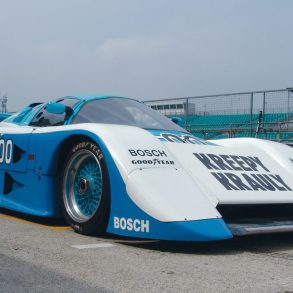
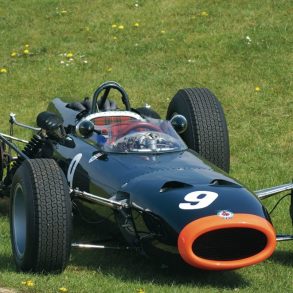
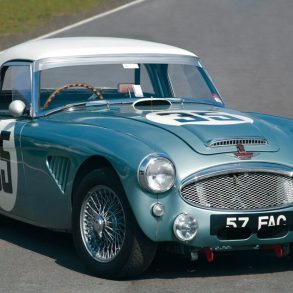
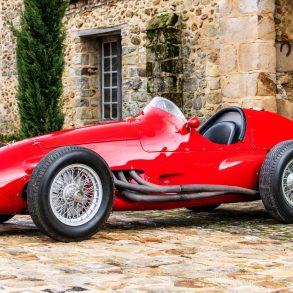
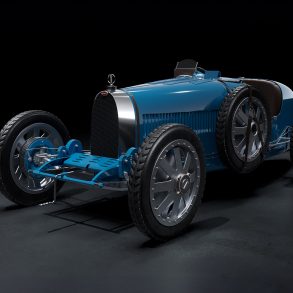
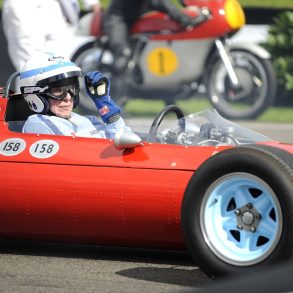

How did you determine that Fangio won more world championships than anyone else?
So Cooper Cars is one of the best Grand Prix drivers in Formula One history?
Bazzi, Bugatti and Chapman as well? Ferrari, Neubauer, Newey? I could go on.
And are you aware Formula One only came into existence in 1950?
This article is poorly written.
Even a passing knowledge or cursory Google/Wiki search could correct half of this, and a proof-read could catch the grammatical errors.
The title should be, “The Best Grand Prix Drivers of All Time” and the non drivers like Cooper Cars eliminated. I don’t think Colin Chapman and Adrian Newey should make the list but I am happy to see a lot of pre-F1 drivers on the list.
Why use Lewis Hamilton’s image when discussing the “greatest Grand Prix drivers ever”? In terms of personality, he does not fit. None of the real greatest Grand Prix drivers had a political agenda – motorsport was there agenda!
“their” agenda :-).
This article dearly needs editing. Builders and designers aren’t drivers. Schumacher won more than 2 world championships. The list of errors is too long to consider this article suitable for publishing.
Silly list; far too many men listed were not race drivers of any kind at all.